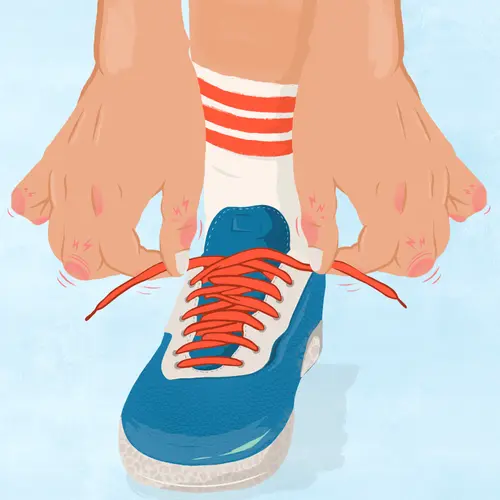Rheumatoid arthritis (RA) is perhaps the most common inflammatory arthritis in the world, says Gary S. Firestein, MD, professor of medicine, dean and associate vice chancellor of translational medicine at the University of California, San Diego School of Medicine. In the United States, an estimated 1.3 million people have the disease, and it affects two to three times as many women as men. And RA may be on the rise in women, according to a 2010 Mayo Clinic study. After decades of decline, the incidence of RA rose modestly among women during 1995 to 2007, researchers found.
Although it's too soon to tell if RA is still increasing or if environmental factors such as smoking (a known risk factor) are to blame, what is clear is that therapy has improved significantly in the past 10 to 20 years, Firestein says. "The majority of our patients, if not in remission, have markedly improved symptoms." Firestein answers some top questions about RA.
1. What causes RA and what are the symptoms?
Nobody really knows, except we do know it involves both genetics and the environment. The risk of developing RA is about 1% in the general population. But if you have a first-degree relative -- like a sister or a mother -- with RA, then your chance of getting the disease increases from 1% to the 2% to 5% range. If you have an identical twin with RA, the risk goes up from 12% to 15%, so that clearly shows genes can play a role. There's probably not a single environmental factor responsible, such as a virus.
The symptoms are swelling and pain and stiffness in the joints, especially stiffness in the morning. In general, it is symmetrical, which means it involves both sides of the body. Typically a person with RA will have swelling and pain in the wrists, knuckles, ankles, and toes.
As the disease progresses, larger joints will be involved: elbows, shoulders, knees, and hips. The pain is usually not severe, but more chronic and dull. RA can cause flares but often includes periods where disease activity is much lower. Fatigue is quite common with active RA, where affected joints have an increase in inflammation with swelling and redness.
2. Can it be cured?
Right now there is no cure for RA, but we have effective treatments for the majority of patients. Some people will have very mild disease, but others have a waxing and waning course with exacerbations and remissions that go on over time.
The general rule for all the therapies is the rule of thirds: a third of patients will get much better with a particular therapy, a third will get somewhat better, and a third will not improve at all. A new class of medications called biologics can be very effective. These drugs block certain proteins in the body that cause inflammation.
3. Besides medication, what else works?
In almost any pain or arthritis study, about 20% to 30% of patients have a modest response to a placebo, which means the expectation of improvement can lead to changes in disease activity. And there actually is physical and laboratory evidence that people are improving, so there must be a biology to it that we don't understand.
It's really important to maintain range of motion and stay physically active if you have any chronic disease and especially a disease of the joints such as RA. Swimming is a great exercise. Using elliptical machines rather than running and pounding the pavement is another example of getting a good aerobic workout without having high impact on inflamed joints.
4. Is it possible to get pregnant with RA? Can I pass RA on to my child?
Women with RA can certainly become pregnant, and pregnancy can induce remission in a large percentage of women -- about half to three-quarters. Subsequently, about one to two months after delivery, those women almost always have a return of the disease or a flare. Nobody really understands why. There are some theories about how the immune system in pregnant women gets modified to prevent rejection of a fetus, and maybe that's responsible for putting the disease into remission.
We always try to minimize drug exposure during pregnancy. There can be some risks related to certain RA medications (such as methotrexate) during pregnancy, so we usually recommend that women be off these medications for six months or so before conceiving.
5. What new treatments do you see coming out in the next five to 10 years?
The most recent RA drugs, the biologics, have to be injected, so there is now a push to find oral pills that mimic the effects of these drugs. And there's considerable interest in personalized medicine -- to try to look at the genetic makeup of a person with RA, so that rather than doing guesswork to find the right combination of medicines, we'll be able to predict treatment based on someone's genes.
Another area is trying to understand when RA actually begins. There's a lot of evidence that the evolution of RA is something that occurs over many years. And we would like the ability to intercede early on in the disease or even before people have symptoms.

